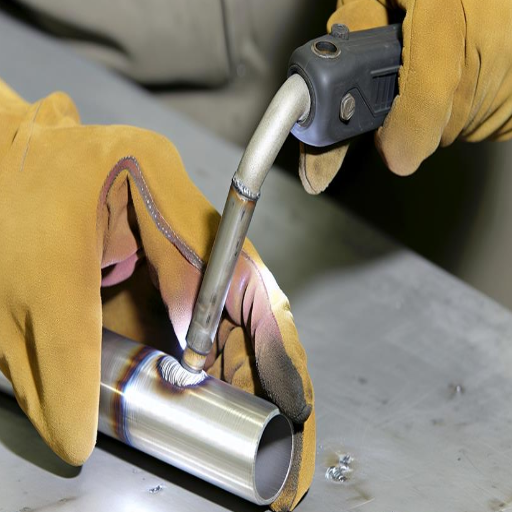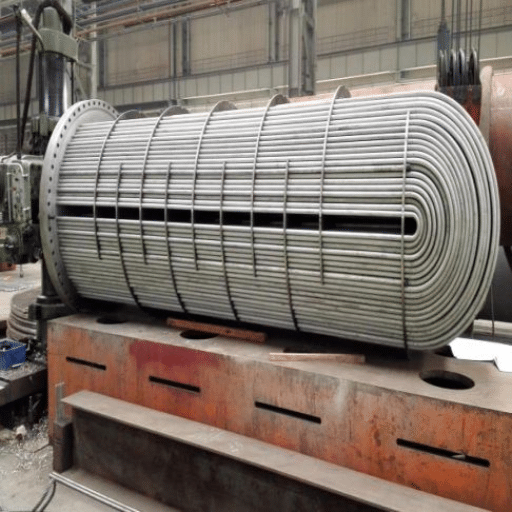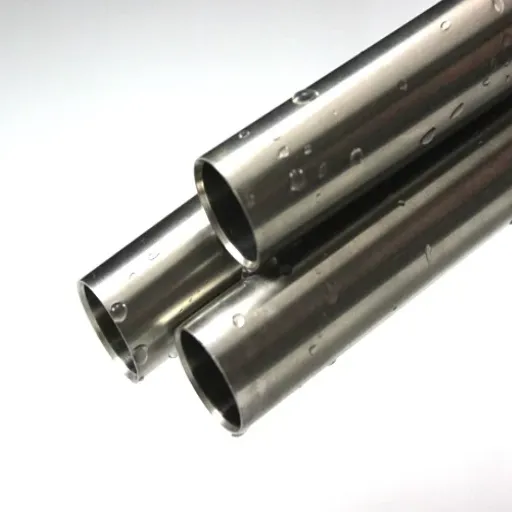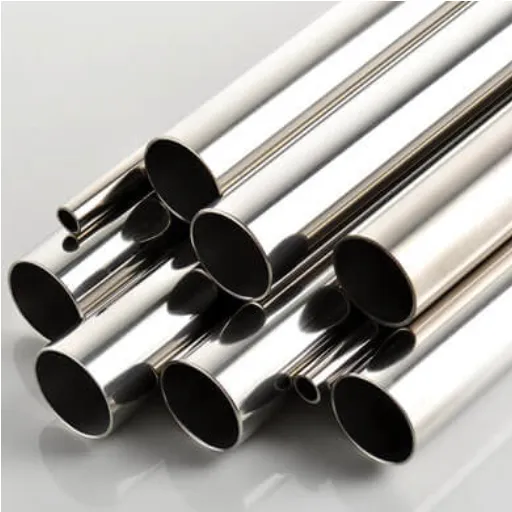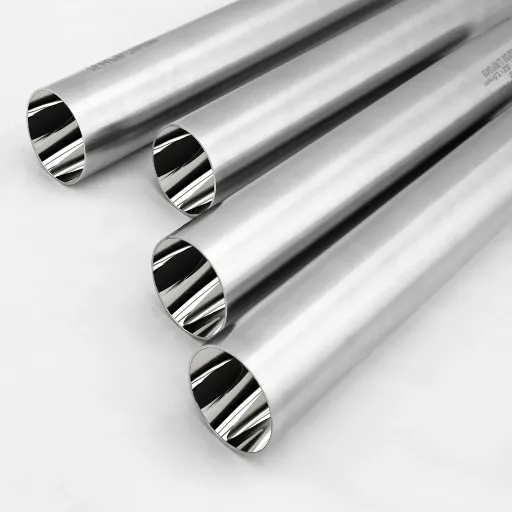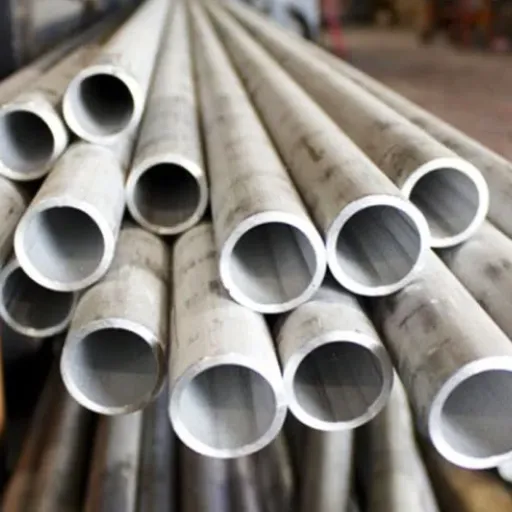Welding stainless steel exhaust pipes requires a unique blend of precision, skill, and technical knowledge. Unlike standard welding tasks, exhaust pipes demand meticulous attention due to their thin walls, susceptibility to warping, and the critical role they play in the performance and durability of a vehicle’s exhaust system. Whether you’re an experienced welder or just starting, understanding the specific techniques and best practices for handling stainless steel ensures strong, clean welds that can withstand high temperatures and resist corrosion. This article dives deep into the essential tips and expert advice to help you master the art of welding stainless steel exhaust pipes, equipping you with the tools to achieve professional-quality results every time.
How to Properly Prepare for Welding Stainless Steel Exhaust Pipes?
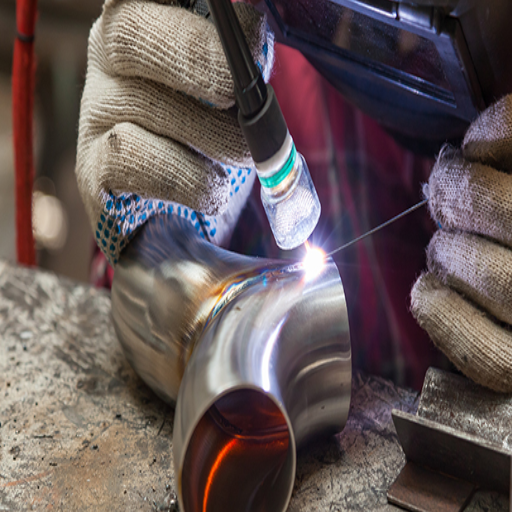
What are the Essential Tools and Equipment Needed?
The proper welding of stainless steel exhaust pipes requires a proper set of tools and equipment for accuracy, durability, and safety. The following are some essential tools and consumables:
- Welding Machine: TIG welding should be used while working with stainless steel. TIG welding offers very good control and quite clean welds, ideal for exhaust systems needing high-quality joints.
- Filler Rods: Ensure you use stainless steel filler rods, either matching or compatible with the stainless steel grade being welded. For example, ER308L rods are usually used for 304-grade stainless steel.
- Protective Equipment: Safety is paramount; this must include at least a welding helmet with auto-darkening capability, fire-resistant gloves, long sleeves, and safety glasses to protect one from flying sparks, heat, and ultraviolet radiation produced during welding.
- Grinding and Cutting Tools: Get yourself an angle grinder of good quality with cutting discs that are rated for stainless steel. These are the finest tools to prepare pipe edges using bearing clean cuts and proper fitment before welding.
- Gas Supply: Argon gas, or a mixture of argon and helium, is used as the shielding gas during TIG welding of stainless steel to guard the weld pool against contamination, which is essential in preserving the corrosion resistance of stainless steel.
- Clamps and Fixtures: Good clamps, fixtures, or pipe alignment tools should be used to secure the exhaust pipes while welding. They must hold the pipes in proper alignment, with adequate stability so as to avoid gaps or weak joints.
Proper preparation of the tools before welding is equally important; keep calibration of the welding machine for stainless steel, for filler rods free of contaminants, and also ensure the cutting tools’ sharpness. Having high-quality and well-maintained tools makes for better strength of welds and fosters efficiency and safety during the welding process.
How to Ensure Proper Fit-Up Before Welding?
Before the welding process can even begin, it is important to ensure proper fit-up that simultaneously produces strong and durable welds with no defects. The very first operation will involve the careful examination and preparation of the materials to be joined. Surfaces must be clean and free from rust, oil, or any material that might weaken the integrity of the weld. Cleaning shall be carried out by approved means, wire brushing, grinding, and solvent application being among the methods considered best. Edges of the materials likewise need to be beveled or shaped correctly according to the joint configuration so that they will be able to be lined up straight, whilst allowing an exact motion of welding penetration during the welding operation.
Alignment tools, on the other hand, and fixtures will be used to hold the workpieces correctly in position. Those tools might be clamps, jigs, or even magnets- they all will serve in keeping the materials still and aligned throughout the welding process. Using precision measurement tools such as calipers or gauges, measure the tolerances and gaps between the materials to verify their compliance with the specified standards or design criteria. Any uneven gaps or misalignment may lead to welding defects, such as improper fusion or warping; hence, this check is very much required for an immaculate weld.
Tack welds are a big help to hold the materials temporarily before completing the weld. They should be put in small increments along the joint, based on the standards of even spacing, to hold the fitup firmly enough but still allow a minor adjustment. Check again for alignment after the tack welding; any shifting once tacked can ruin the result. The application of these steps in a systematic manner should guarantee a proper fit-up that can then be converted into high-quality welds meeting structural as well as design requirements.
What Surface Preparation is Required?
Surface preparation is vital for welding to be stronger and more reliable, since any dirt and irregularity on the materials may prevent fusion or allow some defects to appear. Start by thoroughly cleaning the surface of the materials that will be welded. Remove dirt, oil, grease, and any other visible contaminants using a degreaser or an appropriate cleaning solution. Such contamination acts as a hindrance during welding; residues that are non-metallic interfere with arc stability or bring about solidification defects.
Then address the question of rust, scale, or old paint, as these are the substances that will prevent proper fusion even if welds are set through an arc. Use a wire brush or grinder to take them away or even chemical agents if needed, so that you will have a clean, bare metal surface to weld on. The abrasive cleaning methods should depend on the types of materials and the thickness of the coating or rust present. Before welding, make sure the surface looks uniform with no pits or gouges, since these relief points could lead to irregular heat distribution and weak welds.
Welding cannot start before making sure the surface is dry and free of moisture. Such would induce hydrogen absorption and further build up the chances of porosity or cracking in the weld. Maintain cleanliness and handle the prepared materials carefully to prevent recontamination. Through these surface preparation methods, the structural integrity of the weld will be guaranteed to be enhanced, and with time, it will adhere to quality standards as well as give longevity to the final product.
What is the Best Welding Process for Stainless Steel Exhaust Pipes?
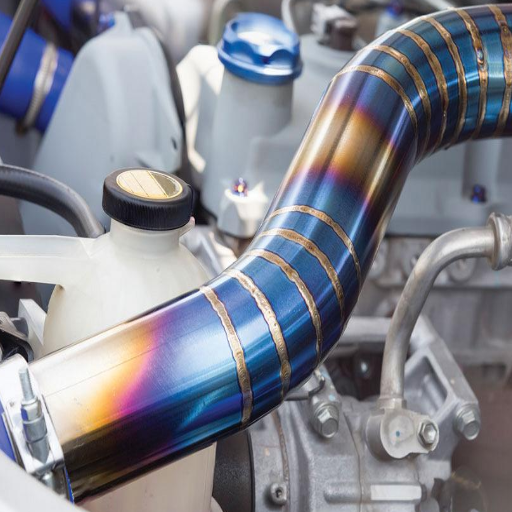
Should You Use TIG or MIG Welding?
When making the choice of TIG or MIG for stainless steel exhaust pipe welding, a series of technical factors must be weighed so that the most fitting procedure can be chosen for a particular application. Owing to the ability to weld very precise, clean, and aesthetically pleasing welds, TIG is often sought after for stainless steel. It consequently allowed for maximum control over heat input and for furnishing welds of good quality with the least amount of distortion possible, which is necessary for sustaining the structure and appearance of stainless steel exhaust systems. Because of the slower speed of welding, the highest skill level is needed from the operator.
On the contrary, MIG welding gives members the possibility of infusing faster welding and being more efficient in larger projects or with thicker materials; it thus takes less time and is easy to learn for higher-volume applications. However, it is doubtful that MIG welding can come anywhere close in precision or finish compared to TIG welding, which can be very crucial when it comes to performance and aesthetics of exhaust pipes.
Since then, the distance between the two welding methods has been greatly reduced due to technological improvements. Pulsed welding in TIG has greatly boosted the welding rate as well as improved heat input control, thereby reducing warping even in thin stainless steel sheets. Improvements in MIG welding are in the form of advanced shielding systems and automated processes that, because of these, allow welds of excellent quality yet maintain their rapid pace.
In the end, it is advisable that TIG welding is used for stainless steel exhaust pipes, especially when thin materials or critical tolerance levels are involved. For high production rate needs or for applications where appearances are not critical, MIG can stand in as the second alternative. The decision should, therefore, be dependent greatly upon the specifications of the project to be carried out, the thickness of the materials, the weld quality needed, and the operator’s skill.
How to Select the Right Filler Metal?
Selecting proper filler metal is a key step in assuring the weld joint’s structural integrity and performance. The filler metal has to conform to the base material properties and the welding process being used. Attention should be given to composition compatibility, mechanical properties, and service conditions.
- Base Metal Compatibility: The filler metal should be chemically compatible or nearly so with the base material to avoid cracking, corrosion, or reduction in strength. For instance, stainless steel seldom gets welded with filler metals other than ER308L or ER316L because they provide for corrosion resistance and good strength.
- Mechanical Property Requirements: The consideration should be tensile strength, ductility, and toughness with the application in view. These should be able to withstand the stresses and environmental conditions in which the weld will work.
- Welding Process, Joint Design: Some filler metals are formulated to work well with certain processes (e.g., TIG, MIG, or Stick welding). Joint form can also influence the filler choice; a highly fluid filler metal might be excellent for flat or horizontal welds but might not perform well in overhead positions.
- Service Environment: The operational environment is also vital to the selection of the filler metal. Filler metals subjected to high temperatures, chemical exposure, or cryogenic environments shall need special properties, such as nickel-based alloy.
- Certifications and Standards: Select fillers from recognized industry standards certified by ANSI/AWS or ISO, which ensure the filler is subjected to rigorous quality and safety testing. Manufacturer documentation can certify actual chemical analyses and mechanical test data to confirm conformance.
The welder to guarantee the best results with a minimized chance of joint failure, meeting fabrication quality standards. Product datasheets and pertinent welding procedure specifications (WPS) should always be consulted to verify the correct application fit of the filler metal.
What Welding Technique is Recommended?
Welding methods depend pearly on the material to be joined, the mechanical properties needed, and the application conditions. However, GTAW or TIG welding, in general, is well-regarded for precision with almost no splatter and delivers a near-perfect weld. TIG welding is preferred for thin materials such as stainless steel and non-ferrous metals like aluminum and magnesium, in which grandeur and aesthetics matter.
MIG welding, however, is the way to go where speed and deposition rate are extremely important. Because it is rather fast and versatile, it finds application mostly in thicker materials and industrial applications. Heavy-duty industrial welding requires productivity: FCAW would give the edge with such productivity and work well in outdoor conditions, being less prone to wind interference than would gas shielding.
SMAW, or stick welding, still stands tall when it comes to erecting extremely large structural members like bridges or heavy machinery, due to the portable nature of the welding equipment and the ability to weld most materials, including mild steel and low-alloy steels. Ultimately, the careful assessment of factors such as joint configuration, material properties, and welding process, backed by codes and standards, will lead to the selection of the right welding technique to ensure project integrity and compliance.
How to Control Heat and Prevent Distortion in Stainless Steel Exhaust Welding?
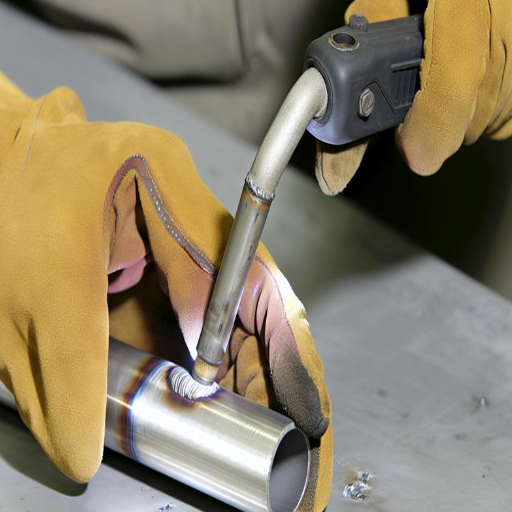
What are the Best Practices for Temperature Management?
Controlling heat becomes more crucial when welding stainless steel exhausts to retain material integrity and to avoid distortion. Preheating, as well as interpass temperature checks, are extremely helpful in enhancing joint quality. In preheating, the material undergoes uniform thermal expansion, thus giving less room for cracking to take place during the welding process. Keeping the interpass temperature within a specified range, usually between about 300°F and 500°F which depends upon the alloy type, helps further in the reduction of residual stresses during cooling.
The second practice could be using heat sinks or copper backing plates to take away excessive heat so that overheating is avoided at local zones, and together, they help retain the structural properties of the base metal. Employing controlled welding sequences, such as staggered welding or back-step welding, also allows for even heat distribution, preventing distortion or warping of the material.
A modern approach to welding stresses minimum heat input, which is achieved by controlling welding speed, amperage, and voltage setting. With all the same considerations, processes such as TIG (GTAW) welding are most suitable for stainless steel exhaust systems. Together, systematically applied, all these procedures will ensure that the welded part meets all requirements, both mechanical and aesthetic.
How to Prevent Warpage and Distortion?
The warpage and consequent distortion typically formed during welding can be avoided by the execution of some planning on the shop floor and by using best welding practices. Pre-welding activities, such as good joint design and fit-up, are critical to minimize process-induced stresses. For example, clamping and certain welded sequences may assist in distributing heat uniformly and thus reduce the tendency to distort.
During welding, heat input, travel speed, and interpass temperature are extremely important factors that need to be controlled, since a variation thereof may result in distortion. Low heat input processes, such as TIG (GTAW) welding or pulse MIG welding, minimize possible thermal distortion, especially in thin materials or those sensitive to heat. Heat sinks or cooling fixtures placed adjacent to the weld can help in drawing away excess heat from the workpiece and thus provide better stability during welding.
Additionally, post-weld practices make their contribution. One of these may be stress relief heat treatment to promote distortion relaxation or mechanical straightening for the removal of minor distortions that may have occurred despite the best preventive actions. Advanced simulation software is nowadays readily available to simulate thermal stresses and predict probable deformations, whereby pre-fabrication adjustments can be made. When all engineering-oriented experiments are combined, the best quality welds are finished in production with the least distortion to assure that the components perform well with reliability.
What Role Does Back Purge Play in Managing Heat?
Back purging is a very critical activity, mainly involved in the welding processes for metals like stainless steel, titanium, or any other alloy that is susceptible to oxidation. Back purging provides an inert atmosphere at the back side of the weld joint, usually by employing argon or nitrogen gas. This controlled environment, for the weld, protects it against oxidation, discoloration, or contamination, all of which would adversely impact the mechanical strength or corrosion resistance properties of the welded zone.
Thermally, back purge helps heat management by subjecting both sides of the weld to uniform heating. By removing an active element such as oxygen or moisture, it avoids localized heating, which might cause uneven stress profiles, warping, or cracking. The current techniques also embed a back purge monitoring system that can maintain a consistent rate of gas flow and pressure to support the best weld quality with minimum heat-induced defects.
Back purging, for high-tech industrial sectors such as aerospace or chemical processing, ensures the weld meets particular standards that support the life and structural integrity of components subjected to severe thermal and environmental conditions.
How to Ensure a Quality Weld When Working with Stainless Steel Exhaust Pipes?
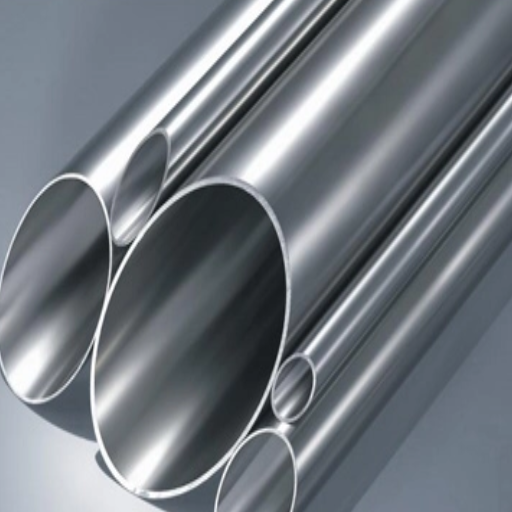
Why is Controlling Shielding Gas Flow Important?
Regulating the flow of shielding gas is crucial for attaining precision welds, highly important in welding stainless steel exhaust pipes. Proper flow control provides an adequate protective shield around the weld pool so that external contaminants such as oxygen and nitrogen do not interact with the molten metal. Such contaminants can make the weld suffer from oxidation or become porous, thereby rendering it brittle, which in turn adversely affects the structural integrity of the weld.
A large gas flow will create a turbulent atmosphere, while any less gas flow in the weld zone will not shield the weld against contaminants from the air suitably. Current welding practices incorporate modern flow meters and regulators to assure an uninterrupted flow rate, which normally varies in the neighborhood of 15–20 cubic feet per hour (CFH), depending on the nozzle size and conditions present during welding. The other factor that would affect the penetration, bead build-up, and strength of the weld is the composition of the shielding gas, such as pure argon or a mixture with helium or carbon dioxide.
Enhanced with the development in analog flow control technology is the digital gas management system, presenting the capability for increased precision and monitoring. These systems are able to note alterations when they occur in flow rates and can also intervene in the control and make adjustments on the fly to maintain flow consistency and better efficiency. By focusing on control of shielding gas flow, welders would be able to obtain clean welds with little or no rework and components that will last, which is most needed in exhaust systems that face high temperatures and corrosive environments.
How to Achieve a Smooth Weld Bead?
The smooth beads on a weld are the result of the precise combination of technique, parameter setting, and quality furnishing. To start with, the base metal surfaces should be cleaned properly to ensure all contaminants like oil, rust, or dirt are removed, as their presence leads to welding defects like porosity or weak weld zones. Another aspect is the selection of the right welding process for your material, be it MIG, TIG, or stick; for instance, TIG welding is highly suitable for smooth weld beads with the aesthetic appeal since it gives higher control over heat input and the depositing of filler material.
Welding is critical and includes amperage, voltage, and travel speed; great attention must be given to all to keep results always consistent. Excessive heat can cause distortion or irregularities in bead shape, whereas insufficient heat may cause poor fusion. Another aspect is the shielding gas, and the mixture selected must protect the weld pool from atmospheric contamination and allow for smooth deposition. Modern welding technology has greater enhancements to weld accuracy, hence obliterating many common user errors, through automated feed systems and digital control.
These factors are paramount, but some experts argue that practice truly makes perfect. Be mindful of hand movement, keep the electrode at a constant angle, generally 10-15 degrees away from vertical, so as to provide the weld with even heat distribution and filler metal deposition. Analyze the shape and structure of the bead, oftentimes helping identify and circumvent possible problems such as undercut or spatter. By adhering to these, great bead forming and tough welding shall be available anytime.
What are Common Defects and How to Avoid Them?
Welding defects inhibit the integrity, attractiveness, and function of a weld. Some common defects are porosity, undercuts, lack of fusion, cracks, and slag inclusions. Each presents with different causes and must be treated with the corresponding prescriptive measures to prevent recurrence.
- Porosity: A weld metal with gas that has been trapped creates a porous weld. Porosity occurs because of contaminated base metals, inadequate shielding gas coverage, or moisture in the welding environment. To prevent porosity, make sure to clean the surface properly, use dry electrodes, and adjust the shielding gas flow rates accordingly.
- Undercut: Undercuts are grooves melted into the base metal along the weld bead edges, thereby weakening the joint. They are mostly caused by excessive heat, unsuitable electrode angles, or high travel speeds. To prevent undercuts, the welder should always control the heat input allowed according to travel speeds, and the electrode angle should direct the filler metal efficiently toward the joint.
- Lack of Fusion: This welding defect occurs when the soldered metal does not completely fuse with the base metal or previous weld passes. The main reasons for the lack of fusion are insufficient heat input and bad technique. The risk of these defects can be minimized by preheating, correct electrode angle, and proper penetration for every pass.
- Cracks: Cracks may occur either during or after welding and so are known as hot or cold cracks. Hot cracks are formed during the solidification because of rapid cooling or due to improper weld bead geometry; hence, cold cracks are often related to hydrogen entrapment, high residual stresses, or very brittle base material. One of the most common preventive means for cracking involves ensuring preheating of materials susceptible to cracking, minimizing stresses within the weld, and resorting to low-hydrogen processes.
- Slag Inclusions: Slag inclusions are non-metallic particles entrapped in a weld. When the flux is not completely removed between weld passes or improper welding parameters deter the welding process, this defect arises. Learn to clean in between each pass thoroughly and correctly; apply good welding speeds and proper electrode angles, all of which negate this defect.
In line with strict observance of standard welding procedures, precautionary measures must be taken to avoid these metal defects by way of apt inspection and testing of the integrity of weldments and preemptive maintenance of equipment. Meticulous adherence to best practices assists in enhancing the overall weld quality for all occasions.
What Safety Measures Should Be Taken During the Welding of Stainless Steel Exhaust Pipes?
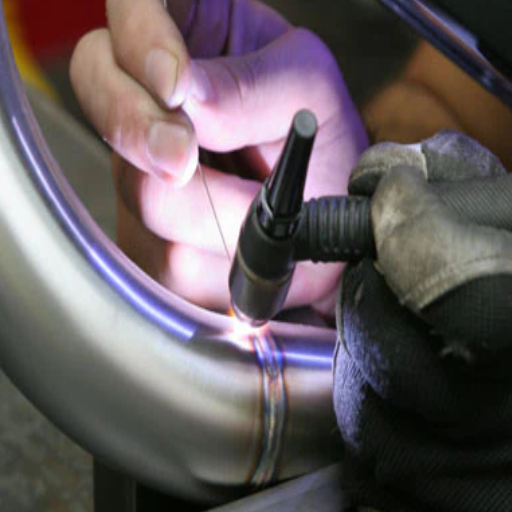
What Personal Protective Equipment (PPE) is Necessary?
Personal Protective Equipment (PPE) is necessary to secure welders from hazards associated with arc welding processes, which range from intense light and heat to sparks and fumes. Some essential welding PPE includes:
- Welding Helmets: This type of helmet protects the face and eyes from UV and IR rays, flying debris, etc. It should also have an auto-darkening filter to allow clear viewing before the arc is started and in times when eye protection remains necessary.
- Safety Glasses or Goggles: They provide secondary eye protection against particulates, sparks, and chemical splashes.
- Protective Gloves: Heat- and flame-resistant gloves are essential in welding for protecting hands from high temperatures and burns. Leather is mostly used as a protective material.
- Flame-Resistant Apparel: Flame-resistant jackets, welding aprons, or coveralls should be worn by welders to provide resistance to sparks and molten metal. Treated cotton or leather is are commonly used material.
- Respiratory Protection: The welding process emits hazardous fumes and gases. Depending on the degree of exposure, the options may vary from a simple respirator to a powered air-purifying respirator (PAPR) intended for a fitting secondary use in hazardous environments.
- Steel-Toe Boots: Steel-toe boots will keep feet safe from falling objects and sharp debris. Rubber soles reduce the chance of electrical shock and give better traction.
- Hearing Protection: Earplugs or earmuffs become necessary when noise levels from welding machines and cutting tools exceed the permissible exposure limit.Time-frame
All PPE must adhere to OSHA regulations in effect at the time it was purchased. Maintenance should be performed regularly, periodic inspections of proper use are to be made, and those using or wearing the PPE should be adequately trained to use it effectively. This process goes a long way towards enhancing the safety and life of welding operations.
How to Protect Against Harmful Fumes and Sparks?
The welding operations for stainless steel exhaust pipes should be protected from noxious fumes and sparks to keep the workforce safe and to comply with occupational health standards. Welding fumes, with heavy metals like hexavalent chromium, manganese, and nickel, are hazardous and pose health risks such as difficulty in breathing and long-term disorders, including lung cancer. Sparks without care can lead to heavy burns or may ignite nearby materials stored away.
An unfluctuating ventilation setup is required to mitigate the dangers of fumes. Local Exhaust Ventilation (LEV) systems should be installed as close to the welding operation as possible to capture and remove contaminants arriving at the site. Whenever welding is carried out outdoors or in a well-ventilated space, it provides a further dilution and dispersion effect on harmful emissions. PPE must also be provided and used, especially a respirator with proper filters like N95 or P100 issued for welders in a high fume concentration environment.
To guard against sparks, keep all flammable materials away from the immediate welding vicinity, and use fire-resistant blankets, curtains, or any other kind of barriers. Welders should be dressed in flame-resistant clothing, gloves, and face shields approved under ANSI Z87.1 as a standard for eye and face protection. Continuous checks and maintenance of PPE are paramount to guarantee the provided coverage and compliance with the stipulated safety standards.
Such steps guarantee the protection of welders from real-time hazards, thereby creating a more secure and productive work environment. Organizations should always conduct periodic safety audits, train their employees on best safety practices, and stay updated on recent developments in welding safety technologies in the highest interest of compliance and worker welfare.
References
Frequently Asked Questions (FAQ)
Q: What are the essential tips for welding stainless steel exhaust pipes?
A: To master welding stainless steel exhaust pipes, ensure you have a clean work area, use a suitable MIG welder, and select the correct filler metal. It’s crucial to control the heat input to avoid warping, especially with thin-walled tubing. Adjust your torch angle to maintain a stable arc and prevent oxidation.
Q: How should I set up my MIG welder for stainless steel welding?
A: When setting up your MIG welder for stainless steel welding, use a 100% argon or a mix of argon and CO2 gas. Opt for a 0.030-inch diameter wire for better control. Adjust the voltage and amp settings to accommodate the specific thickness of the tubing you’re working on.
Q: What do I need to know about welding thin-walled stainless steel tubing?
A: Thin-walled stainless steel tubing requires precise heat control to prevent burn-through. Use a lower amp setting and move the torch steadily to avoid creating too much heat. Keep the welding speed consistent to ensure a smooth weld bead and minimize the risk of distortion.
Q: How can I prevent the formation of a weak root in my welds?
A: To prevent a weak root in your welds, ensure proper joint preparation and fit-up. Use a backing gas to protect the root section and maintain a stable arc. Keep the puddle size small to ensure good penetration without overheating the surrounding metal.
Q: What are the best practices for maintaining a stable arc while welding exhaust pipes?
A: To maintain a stable arc while welding exhaust pipes, maintain a consistent torch angle and distance from the workpiece. Use the correct amperage settings for the thickness of the material and ensure your work area is free from drafts to avoid arc instability.
Q: Why is controlling the torch angle important in stainless steel welding?
A: Controlling the torch angle is important to ensure even heat distribution and prevent oxidation. It helps maintain a stable arc and directs the heat appropriately across the weld joint. An incorrect angle can lead to poor weld quality and increased spatter.
Q: How can I avoid warping when welding stainless steel exhaust pipes?
A: To avoid warping, use tack welds to hold sections in place before fully welding. Distribute heat evenly by moving the torch in a consistent motion and avoiding excessive heat buildup. Allow sections to cool naturally between passes to minimize distortion.
Q: What is the significance of choosing the correct wire diameter for MIG welding stainless steel?
A: Choosing the correct wire diameter, such as 0.030 inches, is crucial for achieving a balanced weld. It provides better control over the puddle and ensures sufficient penetration without excessive heat input, which is essential for thin-walled tubing applications.
Q: What should I consider when selecting a MIG welder for welding exhaust applications?
A: When selecting a MIG welder for exhaust applications, consider its compatibility with stainless steel and its ability to handle different thicknesses of tubing. Ensure it has adjustable settings for voltage and amperage to suit various welding tasks and maintain a stable arc.

